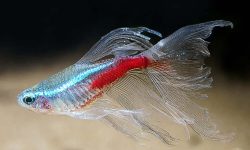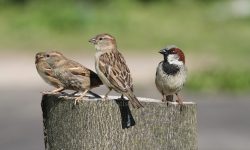In the oak-studded woodlands of California, a peculiar tapping echoes through the trees. It’s not just the familiar sound of a woodpecker in action—it’s the sophisticated work of the Acorn Woodpecker, a bird renowned not only for its striking appearance but also for its remarkable communal food storage system. These birds are more than clever foragers; they are architects of granary trees, transforming living trunks into vast storage vaults for acorns.
This article dives deep into the fascinating ecology and behavior of Acorn Woodpeckers (Melanerpes formicivorus) in California, exploring how their social structure, foraging intelligence, and granary-building skills make them one of the most unique and resourceful birds in North America.

A Bird with a Bold Personality
Colorful Appearance and Vocal Nature
The Acorn Woodpecker is not just visually striking—it radiates personality through both appearance and behavior. Its bold color scheme, with a vivid red crown, crisp white forehead, and glossy black back, is accented by white wing patches and a softly mottled underbelly. What truly sets it apart, however, are its glowing white eyes that give the bird a perpetually surprised, almost theatrical expression. Both males and females share this look, though males typically exhibit slightly more extensive red across the crown, a subtle difference that aids identification but doesn’t influence social roles.
In terms of sound, this bird is just as expressive. Acorn Woodpeckers are among the most vocal of North American woodpeckers. Their calls—ranging from sharp “waka-waka” notes to bubbling cackles and mechanical-sounding rattles—are not random outbursts but carefully deployed signals. These sounds warn others of predators, coordinate movement and foraging, and strengthen social cohesion within tightly bonded groups. Their constant chatter is not just background noise in oak woodlands—it is the glue that holds their cooperative society together.
Native to California’s Oak Woodlands
While Acorn Woodpeckers range widely from Oregon to Colombia, their presence is especially pronounced in California, where they find ideal conditions in oak-rich ecosystems. Coastal live oak forests, blue oak savannas, and mixed woodlands in the Sierra Nevada foothills provide a perfect blend of resources that this species depends on.
Oaks offer more than just a food source. The acorns they produce are the centerpiece of the Acorn Woodpecker’s year-round strategy. These birds store acorns in communal “granary” trees—massive food caches drilled into bark with astonishing precision and scale. But their reliance on oak goes beyond nutrition. Dead branches and standing snags offer essential nesting cavities, while the surrounding vegetation supports a seasonal influx of insects that supplement their diet.
This ecological dependence makes the Acorn Woodpecker a kind of barometer for oak woodland health. When oak trees decline—whether due to drought, habitat fragmentation, or wildfire—these birds often vanish with them. In this way, their bold presence serves not only as a symbol of California’s wild woodlands, but also as an early warning system for broader environmental change.
The Granary Tree: Nature’s Food Bank
An Ingenious Storage System
Among all North American birds, the Acorn Woodpecker stands out for its extraordinary relationship with the granary tree—a living pantry engineered with astonishing precision. These trees are perforated with thousands of meticulously drilled holes, each occupied by a single acorn. Unlike random caches made by many other animals, this is a highly organized storage method developed through both instinct and social learning.
What makes this system truly remarkable is its scale and longevity. A single granary tree may contain upwards of 50,000 acorns, and its use often spans multiple generations. While oak trees are ideal due to their dense wood and reliable acorn supply, Acorn Woodpeckers are opportunistic; they’ll convert any suitable substrate, including utility poles or wooden sheds, into granaries when natural options are scarce. These adaptations speak to the species’ incredible behavioral flexibility in human-altered landscapes.
Why Acorns?
Acorns are more than just abundant—they are nutritionally ideal. Rich in fats and carbohydrates, they provide a dense energy source perfectly suited for sustaining birds through winter, when insects become scarce. But unlike most perishable food, acorns are seasonal yet storable. Once properly fitted into a hole, they dry out without rotting, thanks to the woodpecker’s careful placement and selection of storage sites.
What’s even more impressive is the precision engineering involved. Acorn Woodpeckers revisit stored acorns to inspect them for fit and freshness. As acorns shrink with time, the birds may redrill or resize the storage hole to ensure a snug fit. This attention to detail prevents theft by other animals and reduces spoilage—demonstrating a level of spatial memory and problem-solving rare in the avian world.
Maintaining and Defending the Granary
The granary is not an individual project but a communal asset, central to the survival of the entire family group. Maintenance is constant and collaborative. Birds monitor the granary year-round, reinforcing holes, discarding spoiled acorns, and stockpiling fresh ones during peak harvest season in the fall. This communal investment demands cooperation and role-sharing, reflecting a highly social structure.
Defending this resource is equally important. Granaries attract numerous potential thieves—Western Scrub-Jays, squirrels, and even rival Acorn Woodpeckers. As a result, group members mount a united front to repel intruders. Defense behavior intensifies during late summer and autumn, when acorns are ripening and storage activity peaks. Intruders are often met with loud alarm calls, aerial pursuits, and even coordinated mobbing, a strategy that showcases the woodpecker’s remarkable ability to synchronize group behavior in real time.
This interplay of engineering, resource planning, and communal defense makes the Acorn Woodpecker one of the most sophisticated cooperative breeders in the bird world. The granary tree is more than just a food source—it is the physical center of their complex social life, a structure that binds generations and maintains group cohesion across time.
A Rare and Complex Social System
Cooperative Breeding and Group Living
Among North American birds, few exhibit a social structure as intricate and evolutionarily intriguing as that of the Acorn Woodpecker. This species practices cooperative breeding, in which multiple individuals—often siblings or close kin—live together in extended family groups and work collectively to raise offspring. Rather than following the typical monogamous pair-bond seen in most woodpeckers, Acorn Woodpeckers live in social units that can include up to a dozen members, with several males and females sharing breeding duties.
At the heart of this system is an evolutionary tradeoff. Some birds in the group, especially younger ones, forgo their own immediate reproductive opportunities to help raise the young of others. While this might appear altruistic, the strategy is deeply rooted in kin selection: by helping close relatives succeed, non-breeding helpers increase the chances that their shared genes are passed on. Additionally, remaining in the group improves access to critical resources, including territory, granary trees, and future breeding positions.
Breeding Roles and Kin Dynamics
Breeding within these groups defies the standard mating rules observed in most birds. Rather than exclusive pairs, Acorn Woodpeckers often have multiple co-breeding males and females, many of whom are siblings. This leads to a highly cooperative yet genetically complex system, where multiple paternity is common and the boundaries between nuclear families blur.
Despite this complexity, the structure is not chaotic. Helpers—usually offspring from previous broods—play a vital role in chick-rearing. They take on tasks typically reserved for parents, including feeding nestlings, defending the nest cavity, and maintaining the all-important granary. Juvenile birds often stay in their natal group for several years before seeking new opportunities, contributing significantly to group stability and reproductive success.
Genetic studies have revealed that most group members are closely related, creating a network of inclusive fitness in which each bird benefits indirectly from the survival of its kin. This dynamic helps explain why such a cooperative strategy persists despite delayed personal reproduction.
Territory Inheritance and Stability
Granary trees—the physical and social core of Acorn Woodpecker life—are not easily replaced. Productive territories with well-maintained granaries are rare, and their control can determine long-term survival. As a result, territories are held tenaciously, often across multiple generations.
When a breeding individual dies, the social balance may shift dramatically. Inheritance of the breeding position is not automatic; instead, it often triggers a period of social competition, as subordinate group members or outsiders vie for the vacant role. These transitions can involve coalition formation, vocal confrontations, or even brief but intense physical conflicts.
In successful groups, however, breeding positions are passed down, resulting in territorial dynasties—long-standing family lineages rooted around the same granary tree. This rare combination of resource-based stability and complex kin dynamics sets the Acorn Woodpecker apart as one of the few bird species with a quasi-primate-like social system, rivaling that of jays and crows in terms of cognitive demand and social coordination.
Foraging Behavior and Ecological Impact
Diet Beyond Acorns
While the acorn is the cornerstone of the Acorn Woodpecker’s winter diet, this bird’s year-round survival depends on far more than stored nuts. During the warmer months of spring and summer, Acorn Woodpeckers become highly opportunistic foragers, shifting their diet to meet seasonal resource availability. Insects—particularly ants, beetles, and flying arthropods—form a critical protein source, especially during the breeding season when the energetic demands of feeding chicks are high.
These woodpeckers are also known to consume tree sap, which they harvest by pecking into live trees and licking the sugary exudate, sometimes returning to the same sap wells repeatedly. In addition, they feed on wild fruits, berries, and even nectar, occasionally visiting hummingbird feeders when floral sources are scarce. This dietary flexibility not only increases their resilience in varied habitats—from suburban parks to wild oak forests—but also allows them to prioritize acorn collection during the autumn harvest, when energy can be redirected to stockpiling without risking nutritional deficiency in the moment.
Cavity Nesting and Tree Use
Beyond foraging, Acorn Woodpeckers play a transformative role in their ecosystem through their interaction with trees. Like most woodpeckers, they are cavity nesters, excavating hollow chambers in dead trees or snags to raise their young. These cavities are not temporary shelters. Many are reused across years or generations, with some trees housing multiple nesting sites from different seasons, layered like the history of the group that made them.
But their contribution doesn’t end with their own nesting needs. Abandoned woodpecker cavities become essential shelters for a wide range of other wildlife, including small owls, flying squirrels, bats, and even tree-nesting ducks. In this way, the Acorn Woodpecker acts as a keystone species, directly enabling the survival of other cavity-dependent organisms.
Their habit of repeatedly drilling into trees—for food, storage, and nesting—also increases habitat complexity. This constant excavation activity modifies the structure of oak woodlands, opening up new microhabitats and influencing nutrient cycling as deadwood decays. Their collective impact as ecosystem engineers is comparable to that of beavers in riparian zones: by altering their environment in functional ways, they promote biodiversity and enhance ecosystem resilience.
Challenges and Conservation
Threats to Habitat and Food Sources
The survival of the Acorn Woodpecker is intricately tied to the health of oak ecosystems. As these habitats face mounting pressures, the birds are increasingly vulnerable. One of the most pressing threats is habitat loss, driven by urban expansion, agricultural development, and forest fragmentation. Mature oak trees—essential not only for acorn production but also for nesting cavities and granary construction—are often the first to disappear when landscapes are cleared or converted.
Climate change introduces a subtler but equally dangerous threat. The production of acorns is subject to mast cycles, where trees may yield abundant crops one year and very little the next. These cycles are natural, but increasingly unpredictable weather patterns, including prolonged droughts and temperature extremes, can cause mast failures across large regions. In such years, the absence of acorns disrupts both immediate feeding opportunities and long-term food storage. Without their central resource, entire populations may decline, especially in isolated or marginal habitats.
Wildfires—growing more frequent and intense across California—compound these pressures. While some fire-adapted ecosystems can recover over time, repeated or high-severity burns can decimate oak woodlands, reducing both the number of granary trees and suitable nesting snags. The slow regrowth of mature oaks means that these effects are not quickly reversed, making recovery difficult for species so dependent on specific tree structures.
Adapting to Human Landscapes
Despite these ecological stresses, Acorn Woodpeckers demonstrate a remarkable degree of behavioral flexibility. In suburban neighborhoods, parks, and ranchlands where mature trees remain, they often persist—even thrive—by repurposing human-made structures for their needs. Utility poles, wooden buildings, fence posts, and even barn walls have all been used as substitute granaries when natural options are limited.
This ability to exploit anthropogenic environments offers a partial buffer against habitat loss. However, it is not without consequence. Their tendency to drill into man-made structures frequently brings them into conflict with homeowners, utility companies, and land managers. In such cases, birds may be removed, nests destroyed, or territories degraded—an unfortunate outcome for a species already facing ecological challenges.
Managing this conflict requires thoughtful urban and rural planning that balances human needs with ecological function. Retaining deadwood, planting native oaks, and tolerating moderate woodpecker activity on non-essential structures are all steps that can help maintain coexistence.
Conservation Priorities
Protecting the Acorn Woodpecker involves more than safeguarding a single species—it means preserving the integrity of the broader oak woodland biome. Conservation efforts should prioritize the protection and restoration of native oaks, including both mature trees and regenerating saplings, to ensure long-term food and nesting supply. Equally important is the preservation of standing dead trees and snags, which provide critical nesting habitat and granary infrastructure.
Because the species thrives in both natural and semi-developed areas, bird-friendly urban planning can play a pivotal role. Designing landscapes that integrate large oaks, minimize unnecessary tree removal, and maintain green corridors can support viable populations even in human-dominated settings.
In the face of climate change, adaptive management strategies will be necessary. Monitoring acorn production cycles, supporting forest resilience through fire-smart forestry, and conserving migratory and edge populations will all contribute to long-term viability.
Ultimately, the Acorn Woodpecker stands as a symbol of California’s oak woodlands—brilliant, social, and deeply rooted in its environment. Its survival is a reminder that conserving habitat complexity supports not only individual species, but the entire ecological tapestry they represent.
Conclusion
Acorn Woodpeckers are more than charismatic forest residents—they are cooperative strategists, engineers of their habitat, and masters of long-term planning. Their granary trees are monuments to ingenuity, cooperation, and the enduring rhythms of the natural world.
In the oak forests of California, these birds continue a cycle of life that binds community, resource management, and adaptation into one of nature’s most captivating success stories. To protect the Acorn Woodpecker is to protect the intricate web of life that depends on California’s ancient oak ecosystems—a legacy as vital as it is vulnerable.






